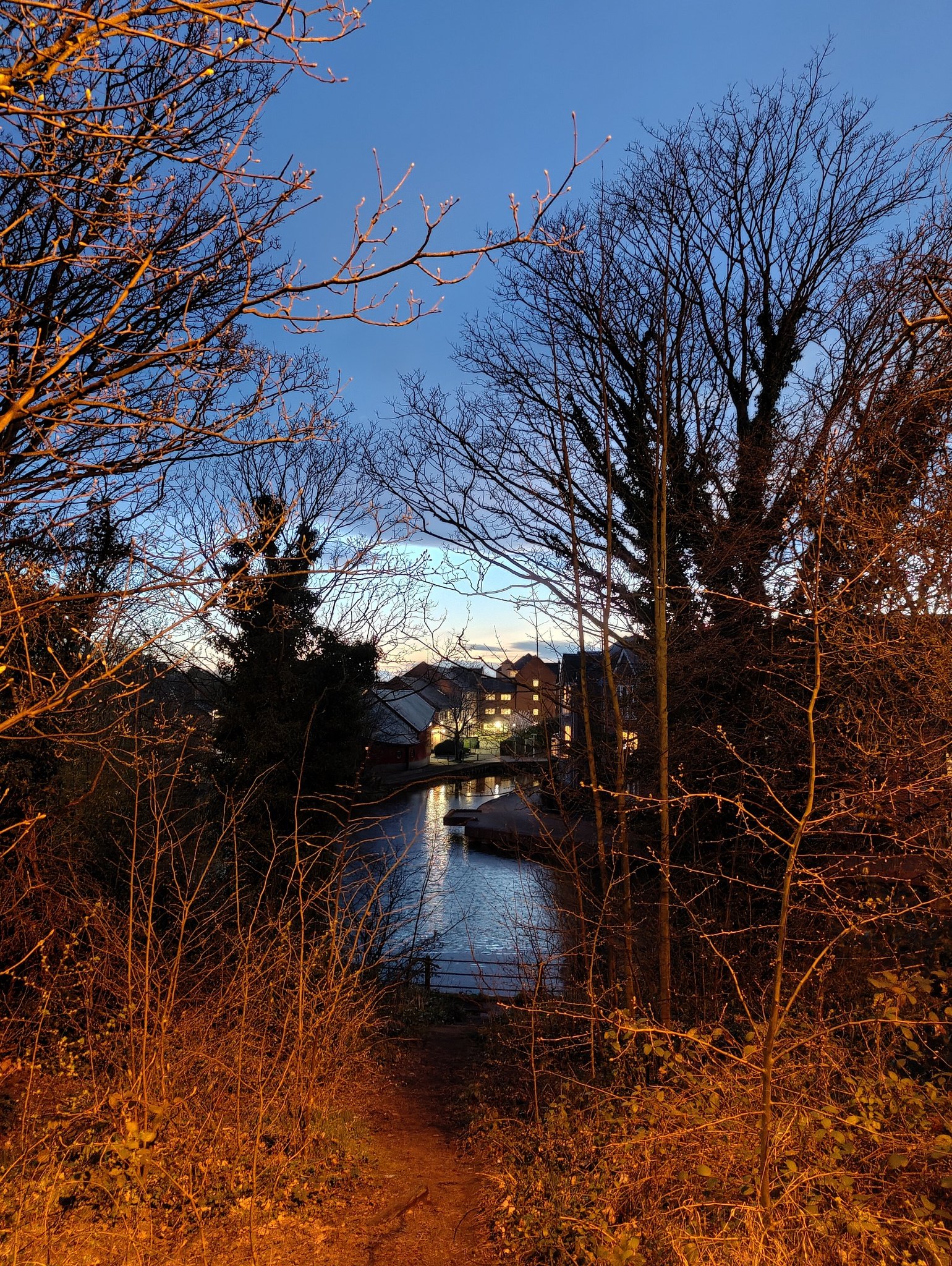- Get link
- X
- Other Apps
- Get link
- X
- Other Apps
Maximum Warp
OnePlus 9 Pro
Pros
- 50W wireless charging
- Hasselblad-tuned cameras
- Clean, customizable OxygenOS software
- Cheaper (UK/EU) price
Cons
- Weaker telephoto video
- Lacks some ColorOS features
With the OnePlus 9 Pro, the Chinese manufacturer has finally broken into the tip-top premium smartphone segment. Its most recent flagship boasts the fastest charging of any mainstream phone and the brand's best cameras. What's more, the starting price is lower than its Oppo rival.
Microscopic marvel
Oppo Find X3 Pro
Pros
- Impressive molded glass back panel
- ColorOS 11 adds useful new features
- Fun new video modes
- Unique microscope camera
Cons
- Not available in the U.S.
- Slower wireless charging speeds
- Main camera weaker in low-light
- More expensive than OnePlus
The Oppo Find X3 Pro is a solid all-around flagship phone, with consistently pleasing photos from its twinned pairs of IMX766 camera sensors. And the back panel introduces design elements never seen before in a smartphone. But with prices north of the £1,000 mark in the U.K., you'll pay for the privilege.
Over the years, phones from Oppo and OnePlus have represented two sides of the same coin. Both are owned by Chinese giant BBK Electronics behind the scenes, so it isn't too surprising to see clear similarities between these brands' flagship phones. This year is a bit different, though, as OnePlus marches ahead with a new camera partnership, and Oppo scales back its ambitions in areas like telephoto zoom compared to last year's Find X2 Pro. The result is that the Oppo Find X3 Pro and OnePlus 9 Pro are as evenly matched as the two brands have ever been, making for an interesting face-off between two of the best Android phones. So which one is right for you? That'll depend on whether you value all-singing, all-dancing software and design chops or the best possible camera experience.
OnePlus 9 Pro vs. Oppo Find X3 Pro: Not-so-distant cousins
In terms of hardware fundamentals, the Oppo Find X3 Pro and OnePlus 9 Pro could easily be two different versions of the same phone. Both run on Qualcomm's Snapdragon 888 chipset. Both boast basically identical 120Hz 6.7-inch displays, which are excellent, and offer LTPO technology to improve battery life.
The specs are so similar, these could easily be two different versions of the same phone.
Both offer capable in-screen fingerprint support alongside face unlock. And both are fitted with the same dual-cell 4,500mAh battery with 65-watt wired charging through the boxed charging brick. And if you buy them in Europe, they'll both pack 5G connectivity and dual-SIM convenience.
The hand feel isn't entirely dissimilar either, though the OnePlus phone feels slightly heftier, likely on account of its beefier cooling apparatus.
| Category | OnePlus 9 Pro | Oppo Find X3 Pro |
|---|---|---|
| Operating System | OxygenOS 11, Android 11 | ColorOS 11, Android 11 |
| Display | 6.7 inches (3216x1440), 120Hz AMOLED | 6.7 inches (3216x1440), 120Hz AMOLED |
| Processor | Snapdragon 888 | Snapdragon 888 |
| Storage | 128G/256GB, 8/12GB RAM | 256GB, 12GB RAM |
| Rear Camera | 48MP, ƒ/1.8, 1.0μm (wide) 50MP, ƒ/2.2, 2.4μm (ultra-wide) 8MP, ƒ/2.4, 1.0μm (3x telephoto) 2MP (monochrome) |
50MP IMX766, f/1.8 OIS (wide) 50MP IMX766, f/2.2 110-degree FoV (ultra-wide) 13MP, f/2.4 2x optical zoom, 5x hybrid zoom (telephoto) 3MP, 60x magnification (microscope) |
| Front Camera | 16MP, ƒ/2.4 (wide) | 32MP, f/2.4 (wide) |
| Battery | 4500mAh, 65W wired, 50W wireless | 4500mAh, 65W wired, 30W wireless |
| Water Resistance | IP68 | IP68 |
| Dimensions | 163.2x73.6x8.7mm, 197g | 163.6x74x8.26mm, 193g |
| Colors | Morning Mist, Pine Green, Stellar Black | Gloss Black, Blue |
It's the external hardware more than the internals that sets these two phones apart. While I'm a fan of the OnePlus 9 Pro's gradient finish, which fades from opaque to a brilliant mirror shine from top to bottom, the technical win has to go to Oppo for the audacity of its curved camera hump — a first in any mainstream smartphone. These are both great-looking phones, though, and given the similarity in size, you'll find both equally easy (or difficult) to use with one hand. Neither is unmanageably big, but equally, these are not small phones.
Another long-standing OnePlus convenience that I appreciate whenever I go back to one of its phones is the iPhone-style alert slider for quickly silencing the device. It's a rarity in the Android world but has been with OnePlus since the OnePlus One.
Same battery, same brick, different charging.
While the battery capacities and wired charging speeds are identical — Oppo's SuperVOOC 2.0 and OnePlus's Warp Charge 65/65T are basically the same standard — OnePlus benefits from quicker wireless top-ups. The 9 Pro is the first mainstream phone to ship with 50-watt wireless charging through Warp Charge 50 Wireless, assuming you cough up the cash for OnePlus's proprietary wireless pad.
It's also worth noting that while on paper both phones seem like they should have similar battery life, I have noticed more aggressive battery depletion on the Find X3 Pro when playing streaming media in the background. That means you may find the Oppo device requires an earlier top-up if you're doing a lot of streaming. Battery differences might also be explained by OnePlus's screen being able to clock all the way down to 1Hz when looking at still images versus 10Hz on the Oppo handset.
In either case, both phones offer around a day of longevity, but usually not more.
OnePlus 9 Pro vs. Oppo Find X3 Pro: ColorOS vs. OxygenOS
Unless you're in China, where OnePlus's phones now run Oppo's ColorOS software, the biggest difference you'll notice in everyday use between these two devices is the software. Both have dramatically different design languages, with Oppo focusing on a more iPhone-like aesthetic and OnePlus staying closer to vanilla Android. (That said, OnePlus's latest OxygenOS release has pushed the company's own aesthetic much more aggressively in some of its bundled apps.)
Different visual styles and different priorities towards Android.
Oppo's software is also unarguably the more feature-dense, with a fully-fledged windowed mode built into ColorOS's multitasking capabilities. That's useful if you like to juggle many apps simultaneously and can even be used to coerce video apps without a picture-in-picture mode into a window.
I've also enjoyed Oppo's quick shortcut feature, which lets you conjure a wheel of favorite apps to jump straight into upon unlocking, which pops up when you long-press on the fingerprint scanner.
OnePlus has been more conservative in its Android version, despite the recent visual overhaul in OxygenOS 11. There's a lighter touch to OnePlus's customization, though there are plenty of options for you to personalize your own device, with various accent colors, icon cutouts, and font options. However, OnePlus lacks Oppo's windowed multitasking and a few other conveniences like the one-handed usability mode.
OnePlus is likely to push out Android 12 faster than Oppo, if past years are any indicator.
Both phones have pretty tight Google integration in their software, though they often go about this differently. Oppo and OnePlus now use Google's Dialer and Android Messages out of the box, along with the Google Discover feed on the home screen. Oppo also offers direct access to Google Translate from within any app via either a three-finger swipe, or the slide-out shortcut menu pinned to the edge of the screen.
So the choice between the two software experiences in part comes down to aesthetics. Do you prefer the distinct look of ColorOS, or the cleaner appearance of OxygenOS?
But it's also worth remembering that Android platform updates will likely arrive faster on the flagship OnePlus device, especially if you buy unlocked. In past years, OnePlus has usually had an open beta build of new Android versions available within days of the final code drop. While Oppo is improving, Android 11 wasn't widely available for the Find X2 Pro until very late 2020.
OnePlus 9 Pro vs. Oppo Find X3 Pro: Photo realism vs. vibrant HDR
Photography is arguably where these two phones really start to diverge. Both offer a quad-camera setup, though with different sensors and lenses and completely divergent approaches to image processing.
Oppo uses the same sensor behind its ultrawide and wide cameras, Sony's new IMX766, while OnePlus has a custom-made IMX789 for its primary, alongside the same IMX766 ultrawide. OnePlus's advantage in sensor size — the IMX789 just being physically larger than the 766 — means there's a noticeable difference in stills from those main cameras. OnePlus just captures more light, so shots look brighter and clearer.
There's less difference in terms of clarity in daylight conditions, but here the gulf in post-processing can be seen. OnePlus's new partnership with Hasselblad for image tuning means its phone produces more natural-looking colors with a less aggressive HDR effect in backlit scenes. Oppo cranks up the saturation much more aggressively, and its AI HDR feature pulls a lot of color out of the shadows, sometimes giving pics a slightly psychedelic quality.
The larger sensor, combined with Hasselblad's color science, also gives OnePlus a small edge when pulling colors out of very dark night scenes.
OnePlus pulls ahead in low light and color accuracy, but some may prefer Oppo's more saturated look.
OnePlus and Oppo are relatively weak in the telephoto department, with only an 8-megapixel 3.3X zoom and 13-megapixel 2X zoom, respectively. With either lens, you're not going to get usable pics at much beyond 5-6X — though that said, OnePlus's processing seemed to do a better job in my night-time zoom shots.
As for the fourth camera, OnePlus fits the 9 Pro with a largely useless 2-megapixel monochrome that's supposed to add extra light information to black and white pics from the main camera. Meanwhile, Oppo offers a low-resolution microscope camera that's hard to focus but fun once you get the hang of it. It's definitely a gimmick, though, and something you'll likely forget is even there within a few days of unboxing the phone.
Video performance is similarly strong across both phones, with a few points of distinction. OnePlus can shoot 8K video at 30 frames per second, or 4K at up to 120fps, both niche features which Oppo lacks. And Oppo has a pretty fun manual "Film" mode that gives you full control of ISO, shutter speed, a manual focus slider. And while OnePlus pulls ahead in low-light video most of the time, other factors like stabilization are equally strong in both phones.
OnePlus 9 Pro vs. Oppo Find X3 Pro: Which should you buy?
The starting price for both phones is also worth considering if you're in the U.K., where at launch, the OnePlus 9 Pro is expected to sell for £100 less. (In the U.S., it's largely a moot point because you'll be paying top dollar to import the Oppo phone regardless.) There's little doubt in my mind that OnePlus gives you a bigger bang for your buck, but Oppo's unique design and software features also shouldn't be dismissed.
Warp-charged
OnePlus 9 Pro 128GB
OnePlus's best cameras ever, and the fastest charging
The OnePlus 9 Pro is the company's latest and greatest flagship offering, with incredibly fast charging and stellar cameras backed by the legendary Hasselblad. The display is stunning, as well, and can reach 1Hz to reduce power consumption.
A work of art
Oppo Find X3 Pro 256GB
Oppo's best-looking phone, with killer video features
The Oppo Find X3 Pro is a fantastic-looking Android phone packing plenty of power. The camera system can take brilliant, vibrant-looking photos that look phenomenal on the 6.7-inch Quad HD display.
- Get link
- X
- Other Apps
















